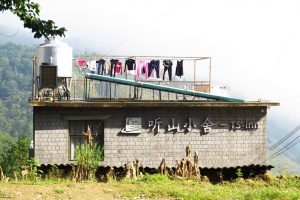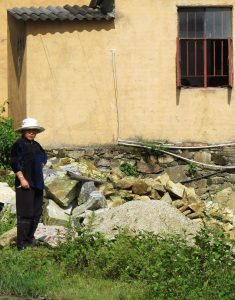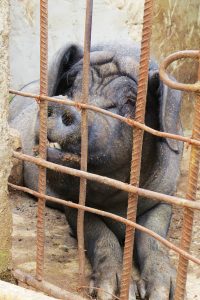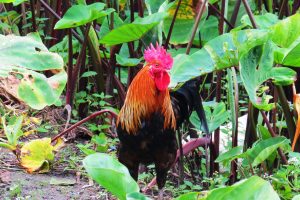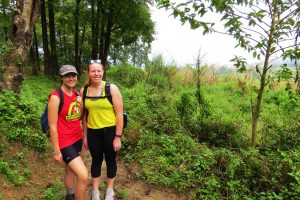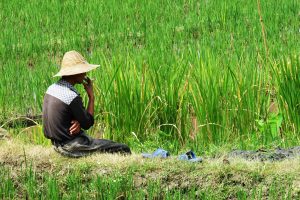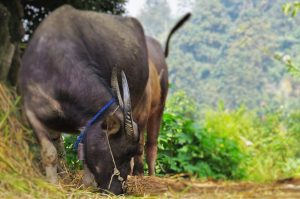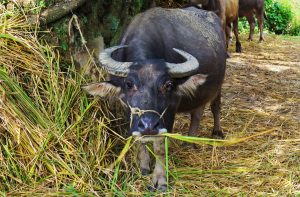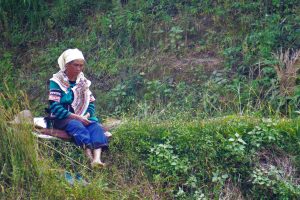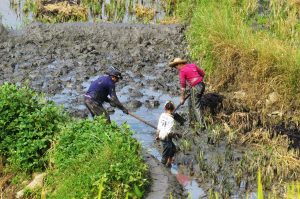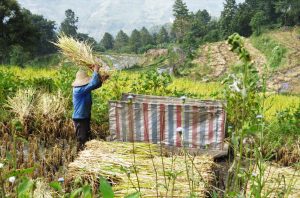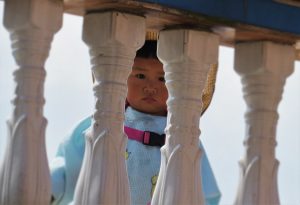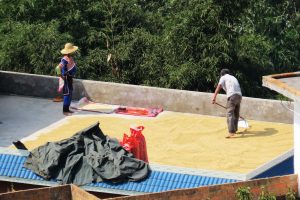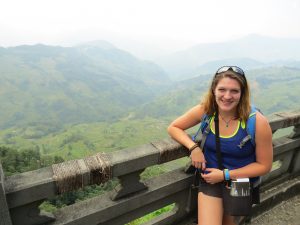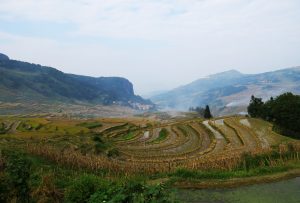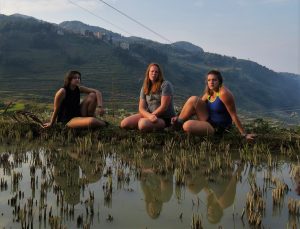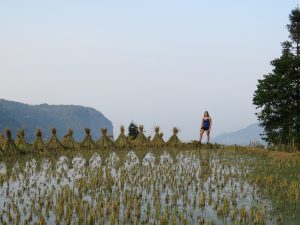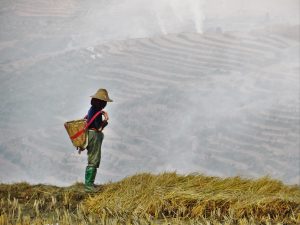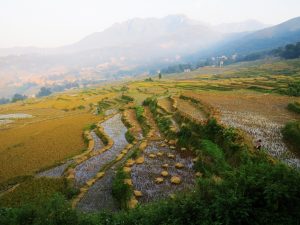Exploring Yunnan
This past week I had to complete a project called the Yunnan exploration Project. Our task was to go in groups of two or three anywhere in the Yunnan province for 5 days and study particular aspects of a city. I traveled with two friends approximately 200 miles south of Kunming, along the Red River. Here one can find an area of terraced fields overflowing with rice that has been cultivated for over 1300 years.
My journey to this region began in Kunming where I found bus tickets readily available providing easy access to the supposedly remote region. After seven hours on a bus packed with everything from white American tourists to an elderly women dressed in traditional clothing vomiting in a bucket, I finally found myself in the humid and green old town of Xinjiezhen high in the Ailao Mountains. Immediately there was a change in the atmosphere. I had left the hustle and bustle of the city and was now in the manure smelling, fly infested countryside. As soon as I was outside the bus station, there was a swarm of all too eager taxi drivers offering me a ride. It was already late in the evening so after arriving to the TS Inn, I crashed into a deep sleep.
The Hani minority of Yuanyang County, are known for their ingenuity and mastering of large scale rice production. They have mastered this art for generations leaving the sides of mountains carved out with rows and rows of terraces.
After an early breakfast, I asked the Inn keeper where to find a taxi back to Xinjiezhen so I could hike out to the small town of Longshuba. The Inn keeper said that being a tourist, a taxi would be too inconvenient and that I should purchase a full day ticket to ride on a bus that stops at all the major viewing points. This was not my idea of travel. I had come to learn and explore the remote villages of Yuanyang, I was not about to hop on a crowded bus with other tourists who most likely all spoke English. I left the Inn and decided to inquire neighboring buildings about finding some sort of local transportation. A women dressed in what appeared to be black woven traditional ethnic clothing trimmed in blue, informed me in her heavily accented mandarin, that there frequently are mini buses which I could wave down from the side of the road. A bus came rumbling by and I negotiated a price before hoping in.
Less than 30 miles north of the border of Vietnam, at an altitude between 3,000 and 6,000 feet more than 400,000 people make a living harvesting rice. Unfortunately, traditional strands suited to local ecology are no longer valued. Through government initiatives and an expanding global market, hybrid seeds are taking over the region.
Once back in Xinjiezhen, I began what was supposed to be a four mile hike and would end up being 14 miles. As I left the outskirts of the small city and headed towards Longshuba, I more frequently crossed paths with the typical farm animals, ducks, pigs, chickens, and water buffalos. An occasional farmer would stare with curious eyes wondering what a strange sight it was to see such a white foreign looking woman strolling along the side of the windy mountain roads. After more than an hour of going from town to town asking if I was indeed headed towards Longshuba, I arrived at the edge of a field of rice paddies. All I had to do was meander through the terraces and I would finally reach the town.
Hybrid crops are produced by cross breeding two genetically advantaged strands, giving birth to a superior offspring. However, this hybrid vigor only lasts for a single generation as all nutrients and advantages in yield are lost forcing farmers to buy new seeds every planting season rather than saving them from the previous harvest.
Walking from paddy to paddy, I noticed the time and effort it took to maintain such a sculpted landscape. Muddy walls were piled high and interwoven with dried grasses to contain the flooded paddies. But I had to be diligent, one wrong step and I would find myself face first in a pile of slimy, snake infested water. It took some intense concentration but I managed to reach the entrance of the town a little wet, but only from my own sweat. The town appeared to have been run entirely by children, they were everywhere, though I suppose most of the adults had to have been working in the fields. I made my way through the concrete and adobe plastered houses while exchanging many “Hello’s” and “Goodbye’s.” It felt odd walking through what I consider to be the middle of nowhere, on the other side of the planet, and still being greeted by a “Hello.” I took this to mean I was not the first foreigner to explore the quaintness of this little town.
Most farmers in this region are growing rice as a cash crop, solely producing for the market. Their focus is on yield and prices, thus the majority of traditional framing areas have turned to the desired promises of pest resistant hybrid seeds. Nevertheless, private companies are moving into this new economic frontier and challenging state seed companies. The slow liberalization of China’s seed sector has been and will continue to significantly change the livelihoods of rural farmers.
The next morning, I decided to embark on a more typical tourist adventure. I still had to haggle my way into a boxed aluminum van, but I decided to travel to the “Must See” of the rice paddies, Laohuzui. When the van pulled up in front of the entrance to the viewing platform, I could immediately tell this experience would be different. Women dressed in traditional clothing eager to strike a deal, were waving post cards in my face the moment I stepped out. Cars lined the street and domestic tourists, obviously from urban areas dressed in their bright white shirts and gem studded purses, were snapping selfies from every angle. This viewing point even required a hefty entrance fee. The scenery was undoubtedly beautiful, but the day was completely lacking in what I consider to be an authentic cultural exchange. Deciding to walk the uncommon path the day before, proved to be increasingly beneficial.
It took some guts to hop on all those vans and try my best in broken Chinese to figure out where I was headed, but every moment of it gave me such an adrenaline rush. It comforts me that while I was in Yuanyang I noticed people still sold and ate traditional red rice varieties, but I know the ill-fated future is all too near. This journey proved that even the remote areas of China are not untouched by the ever increasing globalized world in which we live. The authority of Chinese government is being tested and will probably continue to be so well into the future. Foreign companies are beginning to move into the private rice sector despite safeguards put in place by the state. Rural farmers have no idea the power of transnational seed companies once they get their foot in the door. China is not the only country to be challenged in this way, but it will take some careful navigation to ensure tradition is preserved.
